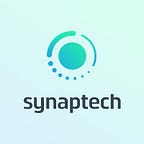Will computers be smarter than us? Possible, through deep learning
Hi there, AI enthusiast! Long time, no see. We continue our series of “hey, I heard about this AI term, but I vaguely know what it means” article series. The previous one was about Decision Tree and today’s article is about Deep Learning.
Imagine that, at some point in life, scientists gather together to create the ultimate weapon to save humanity: an artificial brain. A product so complex that it can mimic everything a human brain can do, but it’s artificial instead of organic.
Now, dream no more! This whole concept is one step away from becoming real, through Deep Learning. Maybe more than a step away, more like a few. But, close, nonetheless.
What is Deep Learning?
Deep learning is also known as deep structured learning or hierarchical learning, and it uses artificial neural networks, or ANNs for short. ANNs are basically nothing else but a pair of hidden layers, with a design inspired by the neurons in the central nervous system of our brain. For short, ANNs are nothing else but artificial neurons.
Artificial Neural Networks are presented as a system of interconnected points, with the purpose of exchanging messages between each other. These connections carry numeric values, which can be tuned based on experience, thus becoming capable of learning.
For instance, as a biological neuron has dendrites, axons and synapses, an artificial one is composed of nodes, inputs, outputs and weights. For instance, like in this photo.
How do ANNs work?
You can stack layers of neurons on top of each other. For example, the lowest layer takes the raw data — the background image. The next layer will find more details, since it can learn more data from the previous layer. And so on, until you re-create another image.
How will this help me in the future?
Let’s say you’re a graphic designer and you really need to know all the hex codes presented in an image. Since your time is short and the idea of colour-picking every single pixel in the image is a hassle, you can design an ANN to pick them for you. All you have to do is to feed it with the raw image.
In the near future, ANNs will be able to pick different kind of datasets, such as raw text and numbers. If you are interested in learning how to develop Machine Learning algorithms, ANNs will prove to be useful in creating them.
This all about Deep Learning, for the moment. But our article series doesn’t end here. Stay tuned for our next article about Generative Adversarial Networks. Meanwhile, if you are tempted to learn more about AI from thriving experts, reserve your ticket to the newest AI-conference based in Berlin, Synaptech!
